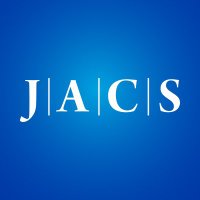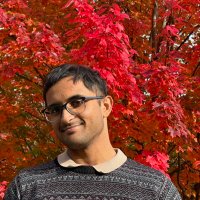
Cui Wang
@_cuiwang
Assistent professor @UniOsnabrueck
ID: 1476707648
https://www.chemie.uni-osnabrueck.de/forschung/anorganische_chemie/ac2.html 02-06-2013 07:53:32
167 Tweet
318 Followers
172 Following


Check out Oliver Wenger and my perspective delving into the role of organic radicals in photoredox catalysis: from catalysis and mechanistic studies to (sub)-picosecond reactivity and the potential of anti-Kasha reactivity! pubs.acs.org/doi/10.1021/ja…


New insights on the modulation of the spin-flip transition in chromium(III) complexes. Congrats to Yating Ye and all co-authors. Great collaboration #PiguetGroup Oliver Wenger Universidad Granada Chemical Science pubs.rsc.org/en/content/art…


Iron(III) complexes with luminescence lifetimes of up to 100 nanoseconds to enhance upconversion and photocatalysis Published in J. Am. Chem. Soc., Joel Wellauer and Björn Pfund in collaboration with AK Meyer Göttingen pubs.acs.org/doi/10.1021/ja…

Microsecond Dark Excited-State Lifetime and Large Cage Escape Yield Afforded by an Iron–Anthracene Molecular Dyad! Electron and energy transfer become accessible! Check out our latest work, spearheaded by the great Felix and Simon! Out in J. Am. Chem. Soc. now! pubs.acs.org/doi/full/10.10…

A simple guide to the design of metal complexes in luminescence and photoredox catalysis. With Giacomo Morselli and Christian Reber in J. Am. Chem. Soc.: pubs.acs.org/doi/10.1021/ja…

Happy to share that our Concept for designing luminescent chromium(III) dimers with ferromagnetic coupling is published on ChemPhotoChem , congrats to Dennis! …mistry-europe.onlinelibrary.wiley.com/doi/10.1002/cp…



We show how photoredox catalysis can bypass Kasha’s rule, enabling reactions from higher excited states. This work, led by the exceptional Björn Pfund, offers new insights into photochemical reactivity. Published in J. Am. Chem. Soc.: bit.ly/3IysmjX


Thrilled to share our new JACS paper on anti-Kasha photoreactivity! We show that higher-lying excited states can drive electron transfer — opening new doors for photoredox catalysis. Huge thanks to Oliver Wenger for the incredible mentorship! pubs.acs.org/doi/10.1021/ja…

Check out our new paper on TTA photon upconversion toward UVC energy generation using TIPS‐benzene as an emitter and heptazine as a sensitizer in Adv Opt Mater Advanced Portfolio News. Nice collaboration with Naoya Aizawa⌬. Congrats Masanori! advanced.onlinelibrary.wiley.com/doi/10.1002/ad…


Cr(III) complexes with enhanced metal–ligand covalency enable tunable NIR luminescence and endergonic red-light photoreduction. Giacomo Morselli and team find signs of doublet–doublet annihilation, or excited-state disproportionation. Now in J. Am. Chem. Soc.: pubs.acs.org/doi/10.1021/ja…

Organic molecules can have multiple photo-accessible spin manifolds? In our paper in Nature Chemistry we show how you can read and write spin-dependent information in a unique organic molecule using photons! nature.com/articles/s4155… Next up: Room Temperature control!😉

Happy to share our latest publication with Iria Bolaño Losada published in J. Am. Chem. Soc.: Understanding Anomalous Cage-Escape Dynamics in Photoredox Processes Driven by a Fe(III) N-Heterocyclic Carbene Complex | Journal of the American Chemical Society pubs.acs.org/doi/10.1021/ja…

Bite angle optimization weakens ligand fields in cobalt(III) complexes, yet lifetimes can increase due to rigidification pi-donor ligand properties are key New insights by Polina Yaltseva in J. Am. Chem. Soc. pubs.acs.org/doi/10.1021/ja…

Unbelievable milestone for our group with a new publication in the prestigious ACS Central Science ! Electron transfer, not energy transfer is controlling population of the final triplet state in a Fe(III)-PhAn dyad! Alejandro Cadranel Giovanni Beneventi F.R.S.-FNRS WEL Research Institute pubs.acs.org/doi/10.1021/ac…

Rethinking Iron Photoredox Catalysis For Fe(III) complexes, excited-state redox potentials don’t follow the usual rules - standard estimation methods fall short JoelWellauer with Paul Francis & colleagues at Deakin University in J. Am. Chem. Soc. pubs.acs.org/doi/10.1021/ja…

